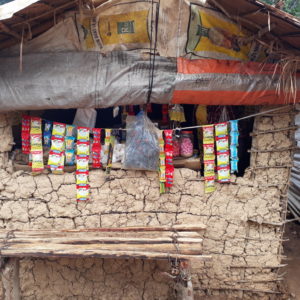Date: February to October 2018
Raw materials: Diamonds and gold
Location: Central African Republic (CAR)
Challenge: understanding the complex dynamics of the ASM gold and diamond sectors in CAR
The artisanal and small-scale mining (ASM) sector in the Central African Republic (CAR) has the potential to be both a driver of development and of conflict. Rich deposits of diamonds and gold across the country have played, in times of peace, a major role in the local and national economy. However, in times of war, they can serve as catalysts to ongoing conflict and as epicentres of violent power struggles between warring parties. High levels of informality and ongoing conflict mean that the minerals sector, exploited almost entirely by ASM, is significantly under-researched. Lack of reliable data on the sector poses a challenge to informed decision-making at a policy level, limiting the extent to which the sector can contribute to national social and economic development.
Against this background, UNICEF and UNDP commissioned a study to better understand the dynamics of the sector. The study was designed to inform policy efforts towards more extensive formalisation and securing greater benefits from the mining sector for the population, in particular marginalised groups such as women who play an important role in the sector.
Solution: context-specific field analysis, with a particular focus on women and children
The study focused on the economic, political, social and environmental characteristics of the artisanal gold and diamond mining sectors in the CAR. It comprised of a general country-wide profiling of the sector as well as analyses of the legal and policy framework, the institutional and operational context, the socio-economic, environmental, health and safety and security impacts of the sector and a market and value chain analysis. The quantitative and qualitative research included focused data collection on vulnerable groups in the ASM value chain who already face marginalisation, linked to issues such as gender discrimination and the presence of children at mine sites.
The study combined in-depth desk-based research with extensive primary data collection at ASM gold and diamond mining, processing and trading sites across the country. Mobile data collection methods allowed findings to be compiled in real-time, ensuring a continuous process of adapting survey and interview tools to the specific context in which researchers were operating. Findings were analysed using rigorous methodologies to provide an accurate snapshot of the sector which would inform policy and decision-making at the highest levels of government.
Results:
The work culminated in the publication of a Diagnostic Study on the Mining Sector and Socio-Economic Development Perspectives in the CAR in light of the African Mining Vision. This report has provided critical ASM-sector information and a basis for further research to both government actors and donor organisations seeking to design well-informed programmatic activities for the sector, paving the way for a Central African ASM sector that contributes to socio-economic development, peace and poverty reduction at both community and national level.



